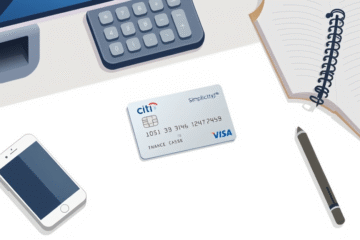Personal Loans have become an increasingly popular financial tool in today’s economy.
As consumers seek flexible funding options, understanding the complexities and implications of these loans becomes crucial.
From their accessibility and quick approval process to their potential financial impact, personal loans offer both opportunities and challenges for borrowers.
This comprehensive guide will explore the essential aspects of personal loans, helping you make informed decisions about your financial future.
Introduction to Personal Credit
Personal credit is a reflection of an individual’s financial trustworthiness, playing a crucial role in a person’s financial decisions.
Having a good credit score can unlock favorable interest rates, leading to significant savings over time.
As a result, managing personal credit is fundamental.
It’s essential to understand interest rates and how they influence the affordability of loans.
Flexibility in personal lending is vital for navigating financial hurdles.
Securing a personal loan with a lower interest rate might help consolidate debt effectively.
Financial experts stress the essential role of personal loans in strategic financial planning.
These loans can support crucial investments or emergencies that require immediate funds.
Understanding personal credit gives individuals more control over their financial journeys.
Exploring tools for credit monitoring equips them to make informed financial decisions consistently.
For more detailed insights, visit NerdWallet.
Benefits of Personal Loans
- Low Eligibility Requirements: Personal loans typically have less stringent eligibility criteria compared to other loan types. Therefore, they are accessible to a broader group of individuals. This can be especially beneficial when you need financing quickly.
- Immediate Access to Funds: Personal loans are renowned for their rapid approval processes, often allowing borrowers to receive funds within a matter of days. Consequently, this swiftness makes them ideal for emergencies.
- Debt Consolidation: By consolidating existing high-interest debts with a personal loan, borrowers often reduce their overall interest rates, thus saving money in the long run. Additionally, this approach can simplify repayments by combining multiple debts into one.
Personal loans serve as a versatile tool for financial management, catering to diverse needs efficiently and effectively. Whether managing emergencies or streamlining finances, their benefits are compelling.
Visit Credit Karma for more information.
Risks of Personal Loans
Risks associated with personal loans primarily revolve around high-interest rates, which can be financially burdensome. For borrowers, these elevated rates mean potentially paying significantly over time.
Understanding these terms is crucial to prevent unexpected expenses down the line. Bankrate provides comprehensive insights regarding loan terms.
High-interest rates can lead to debt accumulation, especially when payments extend over long periods. To visualize the differences, see the table below comparing average rates.
| Loan Type | Average Interest Rate |
|---|---|
| Personal Loan | 12.48% |
| Credit Card | 16.30% |
| Mortgage | 3.50% |
As shown, personal loan rates are notably higher than mortgages, but lower than credit cards.
Accruing debt without strategic planning can trap borrowers in a cycle of financial stress.
Consider strategies such as consolidating debt and comparing lenders for better rates to mitigate risks. These actionable tips require discipline and awareness of repayment capabilities. Maintaining excellent credit scores also helps secure better loan terms.
Lastly, always scrutinize loan agreements for hidden fees and costs. More insights can be gathered from Bankrate.
Assessing Financial Health
When evaluating financial health before taking a personal loan, prioritizing a detailed checklist becomes essential. To begin with, assess your monthly income. Calculate all recurring sources like salary or bonuses.
For efficient tracking, use tools like Mint. Next, document all monthly expenses. This includes necessities such as groceries, utilities, and transport.
Knowing your expenses helps in identifying potential savings areas. Additionally, review existing overall debts, including credit card or other loan amounts.
Ensure understanding of interest rates and remaining payment schedules. Utilize a Mint to manage expenses effectively. Lastly, evaluate your debt-to-income ratio.
Calculate. This percentage indicates financial healthability, assisting in loan approval. Moreover, maintaining a lowered ratio makes handling new loans manageable.
Maintain clear documentation of all finances for comprehensive understanding. Prepare detailed financial overviews by summarizing assets and liabilities precisely. Such thorough assessment aids in making informed decisions about personal loans.
Common Mistakes with Personal Loans
- Applying for a loan without understanding loan terms leads to unexpected charges and fees.
- Borrowing more than necessary increases repayment pressure and potential financial strain.
- Failing to compare loan offers means missing out on better interest rates and affordable terms.
- Neglecting credit score impacts results in higher interest rates or rejection.
- Using loans for impulsive purchases rather than essentials leads to unnecessary debt.
- Accumulating too much debt can cause overwhelming financial obligations and reduce creditworthiness.
- Improper calculation of a repayment plan may lead to missed payments.Visit The Balance for more resources.
Making informed decisions about personal loans requires careful consideration of your financial situation and goals.
By understanding both the benefits and risks, you can better determine if a personal loan aligns with your financial strategy and use it responsibly to achieve your objectives.



0 Comments